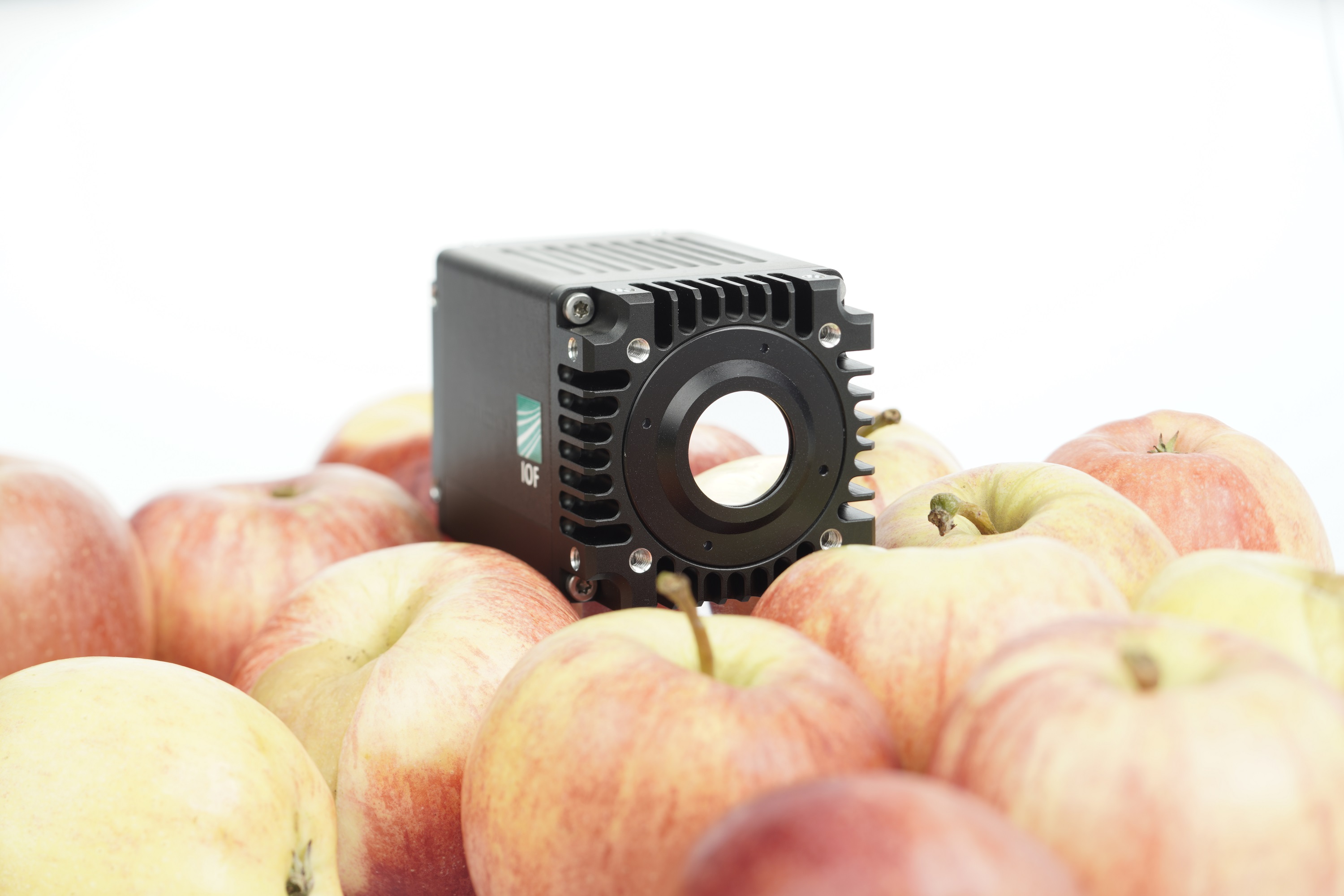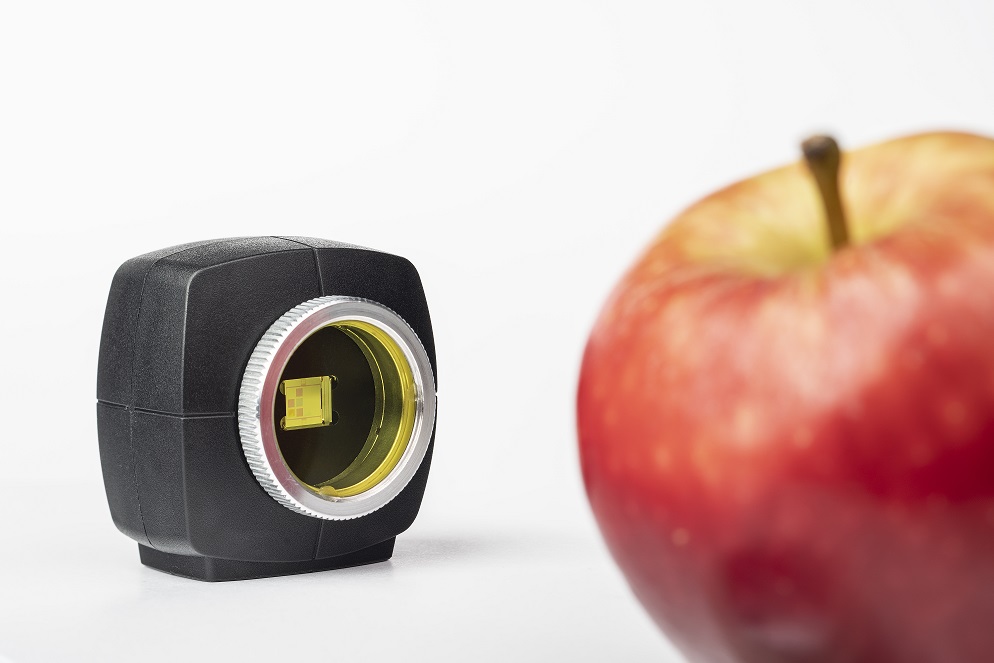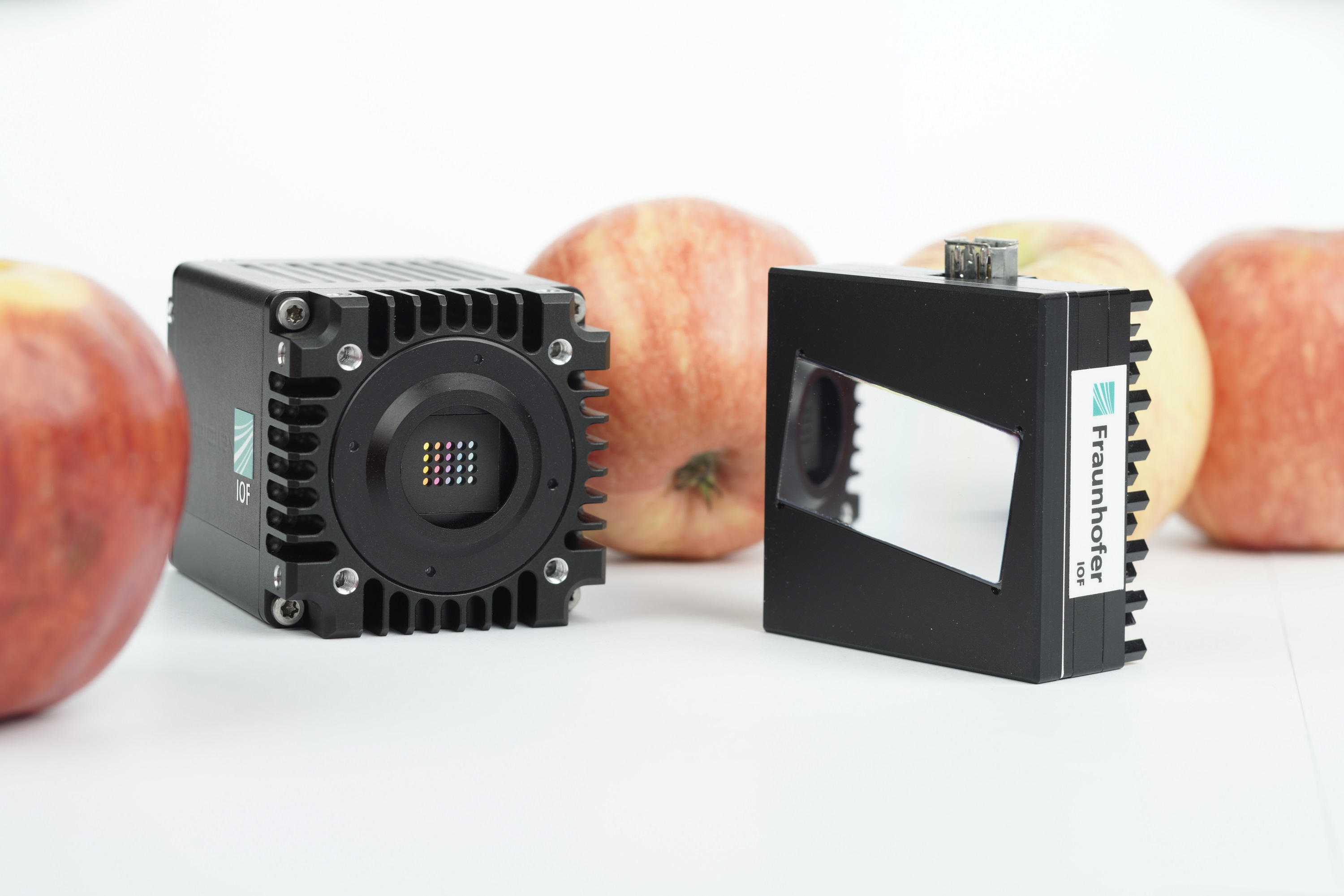


The special requirement for multispectral camera systems is the simultaneous acquisition of high-resolution spectral and spatial information. Classical solutions are often based on scanning methods, in which either a spatial dimension or the spectrum is recorded sequentially in time. Currently, however, an increasing trend towards real-time capable systems can be observed. The progressive miniaturization of such systems, especially for drone-based applications in precision farming, is another current trend.
The new multispectral camera from the Fraunhofer Institute for Applied Optics and Precision Engineering IOF, Jena, based on a multi-aperture system approach with a specifically adapted microlens array in combination with an oblique linear variable spectral filter (Image 1), can overcome these limitations. The setup enables single-image acquisition of 66 spectral channels with linear spectral sampling of about 6 nm over an extended wavelength range in the VIS-NIR region from 450 to 850 nm. The compact system, measuring only 60 x 60 x 28 mm³ and weighing only 200 g, offers a large field of view of 68° and spatial scanning of 400 x 400 pixels per channel. Other potential applications include environmental and agricultural monitoring, industrial production control and sorting, and biomedical imaging.
In addition, a novel array filter has been developed at Fraunhofer IOF, which in combination with an adapted microlens array enables the realization of another ultra-compact multispectral camera (Image 2). An array arrangement of twelve individual spectral channels enables parallelized detection in real time. This is a special Fabry-Pérot filter, which is laterally structured by a combination of gray tone lithography and a dry etching process. Using a continuous wafer-level scale process chain, a large number of filter arrays can be fabricated in parallel.
The multispectral camera implemented on the basis of the novel filters has a spatial resolution of 610 x 610 pixels with a field of view of 32°. The twelve spectral bands can be individually selected in a range from 500 to 950 nm and have a typical bandwidth of 20 to 30 nm. A reconstruction of the complete multispectral data cube is then performed by superimposing the individual channels based on a spectral calibration of each pixel as well as a spatial calibration of the relative single image coordinates.